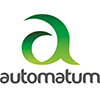
History and main objective of the Digital Open Framework!
The Open Digital Framework (ODF) is a framework designed to help technology and telecommunications companies adapt to digital transformation. Developed by the TM Forum, the ODF is an evolution of Frameworkx, combining modern practices to streamline processes, reduce costs and accelerate innovation.
In this article, we explore the history of the ODF, its core purpose and its impact on the digital transformation of companies.
History of the Open Digital Framework (ODF)
The need for a framework like the ODF arose as telecommunications companies, service providers, suppliers and integrators faced challenges in keeping up with technological change. In the early 2000s, frameworks such as eTOM were created to structure business processes. In parallel, SID and TAM (Application Framework) were developed to standardize information and applications within companies.
However, with the advent of 5G, IoT (Internet of Things), artificial intelligence and cloud computing, traditional frameworks began to face limitations. Companies needed a more agile and integrated approach to deal with increasingly complex digital services. It was in this context that the TM Forum launched the Open Digital
Framework (ODF), an evolution of Frameworkx, bringing together the best concepts of eTOM, SID and TAM, but with a greater focus on automation, open APIs and components and artificial intelligence.
The ODF has become an essential model for companies wishing to accelerate digital transformation, providing guidelines for telecom operators and technology providers to create more flexible and connected ecosystems.
Main Objective of the Open Digital Framework
The main objective of the Open Digital Framework (ODF) is to help companies modernize their operations, standardize processes and accelerate the adoption of digital technologies. To this end, the ODF is based on three fundamental pillars:
1. Agility in Digital Transformation
The ODF model is designed to enable companies to adapt quickly to market changes. This includes the adoption of new technologies such as 5G, artificial intelligence, blockchain and native cloud computing, ensuring that services can be modernized without major business disruptions.
2. Integration Facilitated by Open APIs
One of the great advantages of ODF is its strong integration with Open APIs. The TM Forum created a set of standard APIs that allow different systems and platforms to communicate efficiently, reducing the complexity of integrating new digital services.
By using open APIs, companies can:
- Create new services more quickly.
- Improve interoperability between different systems.
- Reduce integration costs.
- Facilitate partnerships between operators, suppliers and startups.
3. Standardization and Operational Efficiency
ODF helps to unify processes, data and systems within an organization. This means that companies that adopt this model can have more efficient, standardized operations aligned with the best practices in the sector.
This leads to benefits such as:
- Reduced operational costs.
- Improved customer experience.
- Greater scalability and flexibility to launch new products.
Open Digital Framework (ODF) Components
The ODF combines several TM Forum initiatives and standards to provide a comprehensive approach to digital transformation. Key components include:
✅ Open Digital Architecture (ODA): A digital architecture based on microservices and open APIs, allowing greater flexibility to create new products and services.
✅ Open APIs: A set of standardized APIs to facilitate communication between different systems and platforms.
✅ AI-driven Operations: Using artificial intelligence to automate processes and improve operational efficiency.
✅ Data Governance & Analytics: Frameworks to manage and analyze data efficiently and securely.
✅ Zero-Touch Automation: Process automation to reduce the need for manual intervention and accelerate service delivery.
These elements ensure that companies can create more dynamic, efficient and adaptive business models to new market demands.
Impact of ODF on the Telecommunications and Technology Industry
The adoption of the Open Digital Framework has revolutionized the way telecommunications companies and service providers operate. Some of the key changes include:
📌 Transformation of network infrastructure: Telecom operators are using ODF to modernize their networks, preparing for 5G, IoT and cloud computing.
📌 Acceleration of new product launches: With ODF, companies can develop and launch new digital services more quickly and efficiently.
📌 Improved customer experience: ODF allows companies to personalize services and automate support processes, resulting in faster and more efficient service.
📌 Reduction of operational costs: The standardization and automation provided by
ODF help companies reduce unnecessary IT and infrastructure expenses.
The Open Digital Framework (ODF) represents a significant advance in the way telecommunications and technology companies manage their operations and adopt new technologies. Created by the TM Forum, it emerged as an evolution of Frameworkx, bringing more agility, integration through open APIs and operational efficiency.
By adopting ODF, companies can accelerate their digital transformation, launch new services more quickly and reduce costs, ensuring competitiveness in a constantly evolving market. ODF not only defines best practices for processes, information, integration, business capabilities and components, but is an essential guide for optimizing digital transformation programs, reducing risks, time and implementation costs.
